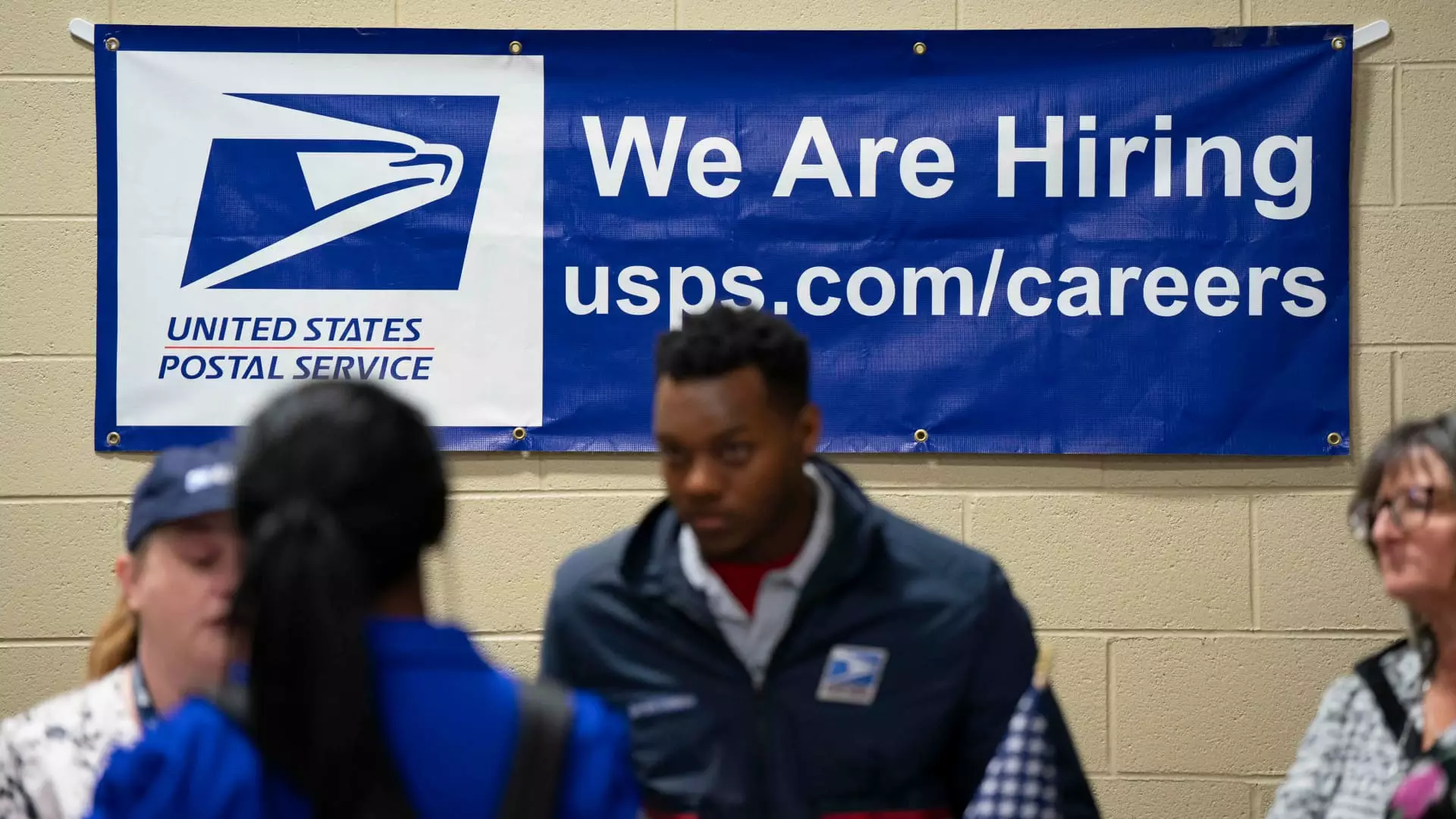The latest employment figures hint at a façade of resilience within the U.S. labor market, yet the underlying currents signal a more tumultuous reality. With nonfarm payrolls rising by 139,000 in May, this figure eclipsed the subdued projections set forth by the Dow Jones of 125,000. Yet, it is imperative to scrutinize this data with a discerning eye, for much of this growth can be attributed to industries like healthcare and leisure, while potential warning signs lurk just beneath the surface. The economy appears stable, but upon closer inspection, cracks are manifesting.
The unemployment rate remaining steady at 4.2% coupled with an unchanged broader measure that accounts for discouraged workers at 7.8% obscures the significant shifts taking place under the radar. On the surface, things seem positive, but the stark reality is that nearly 700,000 people are no longer participating in the workforce, suggesting that many have simply given up on the labor market. This disheartening trend offers a glimpse into the lives of those not represented in the polished numbers, pushing us to consider who truly reaps the rewards in this so-called stable environment.
The Consequences of Government Actions
Slashing jobs within the government sector, a direct result of the federal efforts to reduce workforce size under the Trump administration, presents a tangible risk to the overall economy. With 22,000 jobs lost in May alone, this trend raises critical questions about the long-term sustainability of economic policies that prioritize budget cuts over the welfare of citizens. When government jobs are eliminated, it not only displaces workers but also negatively impacts local economies that hinge on public sector employment.
As a society, we ought to question whether this approach truly elevates the nation’s economic standing or further contributes to the widening gap between the employed and the underemployed. Such aggressive austerity measures may lead to a cycle of instability where those in vulnerable positions find themselves navigating increasingly precarious situations. Policymakers must recognize that job losses in one sector can result in a ripple effect felt across the economy.
The Tariff Trap: Economic Anxiety on the Rise
The looming specter of tariffs complicates the picture further. With businesses and consumers constantly on high alert, the growing fears surrounding tariff-induced inflation sway public sentiment towards uncertainty. While some economic indicators might suggest a healthy recovery from the recession, consumer anxiety remains palpable. The specter of tariffs hangs over the economy like a dark cloud, and until there is clarity and rationality in trade policy, consumer confidence will falter.
Labor market growth driven by temporary, low-paying jobs does little to reassure families whose financial security is tied to concrete economic stability. In turn, businesses find themselves hesitant to engage in expansion or hiring initiatives, wary of the impending impacts of tariff regimes on their profit margins. The sweeping changes that accompany these tariffs suggest that the playing field may deepen inequalities rather than rectify them.
The Federal Reserve: Walking a Tightrope
In this chaotic economic landscape, the Federal Reserve finds itself in a precarious situation. With an impending policy meeting, the central bank must tread cautiously as it navigates the tumultuous waters of a slowed economy and rising inflation fears. The effects of global trade disputes and uncertain domestic policies loom large, influencing the decisions that could either propel the economy forward or hinder its growth. The hesitance to adjust interest rates reflects the delicate balancing act that policymakers are faced with.
While the growth numbers look appealing at first glance, it is paramount for the Federal Reserve to consider the broader context—especially the rising anxiety among average Americans as they brace for the repercussions of policy shifts. The real economic narrative is not just about numbers; it encompasses lives, livelihoods, and the necessity for genuine leadership that addresses these interconnected challenges head-on.
While some celebrate the apparent recovery, a sobering realization surfaces: the job market might be standing tall, but it’s doing so on shaky ground, and the time for proactive solutions is now.


Leave a Reply